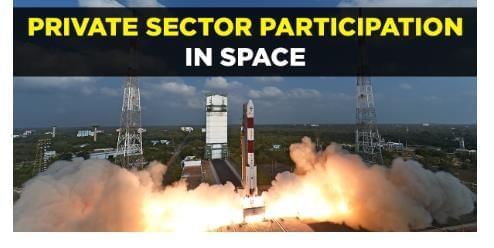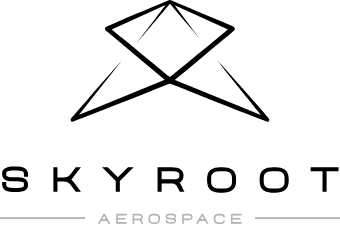Private Space Sector in India | Science & Technology for UPSC CSE PDF Download
Introduction to the Private Space Sector in India
The private space sector in India has undergone a transformative evolution, shifting from a government-centric model dominated by the Indian Space Research Organisation (ISRO) to a dynamic ecosystem that integrates private innovation, commercialization, and global collaborations. This shift was catalyzed by reforms in 2020, which opened the sector to non-governmental entities (NGEs), leading to a surge in startups, investments, and technological advancements. As of mid-2025, India's space economy is valued at approximately $8-9 billion, with projections to reach $44 billion by 2033, growing at a compound annual growth rate (CAGR) of over 13%. This growth is driven by upstream activities (e.g., launch vehicles and satellites) and downstream applications (e.g., satellite services for communication, navigation, and Earth observation).
Key drivers include:
- Historical Context: Prior to 2020, ISRO held a near-monopoly, focusing on national missions like Chandrayaan and Mangalyaan. Post-2020 reforms have fostered over 229 active startups (up from 1 in 2014 to over 400 companies by 2024), creating around 22,000 jobs and attracting more than $415 million in funding since 2020, predominantly in upstream ventures.
- Economic and Strategic Impact: The sector contributes to India's goal of capturing 8% of the global space economy by 2033 (from 2% currently), with exports targeted at $11 billion through public-private partnerships. It supports national initiatives like Atmanirbhar Bharat (self-reliance) and enhances strategic capabilities in areas such as defense, disaster management, and digital connectivity.
- Recent Developments (2025): India's historic human spaceflight to the International Space Station (ISS) in June 2025, with Group Captain Shubhanshu Shukla as Mission Pilot, marked a milestone in international cooperation. The hosting of Karman Week in Bangalore in July 2025 highlighted India's leadership in public-private synergies and climate-focused space applications. Additionally, the India-U.S. TRUST Initiative launched in 2025 has strengthened civil space ties, including the ISRO-NASA-AXIOM mission. Collaborations like Airtel and Reliance Jio partnering with Starlink (approved in early 2025) aim to expand satellite internet in remote areas, bridging the digital divide.
- Government Support: Initiatives include a ₹1,000 crore venture capital fund (approved in 2024) for space tech firms, technology transfers from ISRO, and efforts to build small satellite constellations and reusable launch vehicles.
Key Policies and Reforms
India's policy framework has been pivotal in enabling private participation, with a focus on deregulation, investment, and innovation:
- Indian Space Policy 2023: This foundational policy demarcates roles—ISRO concentrates on advanced R&D and national missions, while NGEs handle commercial end-to-end activities such as satellite manufacturing, launches, ground stations, and services. Key provisions include:
- Allowing 100% Foreign Direct Investment (FDI) in satellite manufacturing and operations (up to 74% automatic route), 49% in launch vehicles, and 100% in components/subsystems.
- Promotion of technology transfers, intellectual property rights, and infrastructure sharing (e.g., private launchpads).
- Objectives: Boost commercial capabilities, foster innovation, ensure compliance with international treaties (e.g., Outer Space Treaty), and position India as a global space hub amid the shift toward strategic autonomy and U.S. alignments.
- Impact by 2025: Enabled the surge to 229+ startups and $415 million+ funding; supported projects like 52 spy satellites (half by private firms) over the next five years.
- Space Sector Reforms (2020): These reforms liberalized the sector by allowing private access to ISRO facilities, data, and technologies, encouraging public-private partnerships (PPPs), and facilitating spectrum allocation and orbital resources.
- FDI Policy Revisions (2024): Further eased norms to attract global investments, leading to partnerships like Starlink's entry in 2025 and L&T's expansion into space manufacturing.
- Other Initiatives: The establishment of IN-SPACe as a single-window agency and NSIL as the commercial arm; norms for space debris management and sustainability. In 2025, regulatory updates emphasize public-private synergy, as seen in collaborations with Hindustan Aeronautics Limited (HAL) and startups.

Indian National Space Promotion and Authorization Centre (IN-SPACe)
Established in June 2020 under the Department of Space, IN-SPACe functions as the nodal regulatory and promotional body for private space activities, operating as a single-window agency to streamline processes.
- Role and Functions:
- Authorizes and regulates space activities, including launches, satellite deployments, ground stations, and spectrum/orbital allocations.
- Facilitates technology transfers from ISRO to private firms and promotes collaborations (domestic and international).
- Ensures compliance with national policies and global standards, including debris mitigation.
- Supports startups through mentorship, seed funding, and access to testing facilities.
- Key Achievements and Developments (up to August 2025):
- Approved over 50 private projects, including India's first private rocket launch (Skyroot's Vikram-S in 2022) and Agnikul's Agnibaan SOrTeD in 2024.
- In 2025: Facilitated Starlink's operational approvals and telecom partnerships; hosted international events like Karman Week to promote climate-focused innovations.
- Promoted inclusive growth via programs for startups; authorized foreign collaborations, boosting FDI inflows.
- Recent: Supported the growth to over 400 space companies, emphasizing public-private synergies with entities like HAL, Skyroot, and Agnikul.
NewSpace India Limited (NSIL)
Incorporated in March 2019 as a Public Sector Undertaking (PSU) under ISRO, NSIL serves as the commercial arm, focusing on monetizing space assets and building industrial ecosystems.
- Role and Objectives:
- Commercializes ISRO's products/services, including satellite launches (via PSLV/SSLV), transponder leasing, and satellite-based services (e.g., SATCOM in C/Ku/Ka/S bands).
- Transfers technologies to private consortia for scaled manufacturing (e.g., PSLV/SSLV).
- Targets global markets for small satellite launches and provides remote sensing/mission support.
- Key Achievements and Developments (up to August 2025):
- Launched over 433 foreign satellites; notable missions include PSLV C-37 (104 satellites in 2016).
- Technology transfers: PSLV/SSLV to industry consortia for end-to-end production.
- Revenue: 43% growth in FY25, reflecting expanded operations.
- Recent Missions: GSAT-N2 (November 2024); planned GSAT-N3 in Q1 2026 (earlier reports mentioned Q1 2025); first fully industry-made PSLV in Q2 2025.
- 2025 Plans: 10 orbital launches, including PSLV-C61/EOS-09 for microwave remote sensing; collaborations for ground infrastructure and spin-offs (e.g., agriculture, disaster management).
Private Startups: Skyroot Aerospace and Agnikul Cosmos
These startups represent the vanguard of India's private space innovation, emphasizing affordable, indigenous, and customizable launch solutions.
Skyroot Aerospace
- Company Profile: Founded in 2018 in Hyderabad; focuses on the Vikram series of orbital launch vehicles with the motto "Opening Space for All." Aims to reduce launch costs through advanced propulsion.
- Key Technologies: Vikram vehicles (S, I, II, III) use solid, liquid, and cryogenic propulsion; features regeneratively cooled, 3D-printed engines; payloads up to 815 kg to 500 km orbits.
- Achievements and Launches:
- Vikram-S: India's first private sub-orbital launch (2022).
- Milestones: Full-duration solid stage test (first by private firm); cryogenic engine fire (2023); Stage-2 (Kalam-250) test for atmospheric-vacuum transition (2024).
- 2025 Updates: Successful test of Kalam-1200 (first stage) on August 8, 2025, at ISRO's Sriharikota facility—India's largest privately developed rocket stage, lifting Vikram-1 to over 50 km altitude.
- Partnerships: With Axiom Space (June 2025) for Low Earth Orbit (LEO) access; Siemens for digital transformation.
- Future Plans: Vikram-1 orbital debut in late 2025 (delayed from 2024); aim for two monthly launches by year-end; expand global small satellite services.
Agnikul Cosmos
- Company Profile: Founded in 2017 in Chennai (IIT-Madras incubated); specializes in on-demand, customizable launches with the Agnibaan series.
- Key Technologies: Semi-cryogenic engines (3D-printed for rapid assembly); payloads 30-300 kg to LEO; plug-and-play customization for small satellites.
- Achievements and Launches:
- SoRTeD-01: Sub-orbital test with 3D-printed engine (March 2024).
- Agnibaan SOrTeD: First private launch from India's private launchpad (May 2024); world's first single-piece 3D-printed engine.
- 2025 Updates: Successful engine test-fire for Agnibaan on May 23, 2025; unveiled world's largest single-piece 3D-printed Inconel rocket engine (August 2025, with U.S. patent); hosted French delegation (May 2025).
- Future Plans: Orbital launches by late 2025-2026; commercialization in 2025 with 30+ potential clients; satellite deployment services and international partnerships.
Broader Achievements and Milestones in the Sector
- Launches and Innovations: Private firms have indigenized technologies (e.g., 3D-printed engines), reducing costs and timelines; contributed to 433+ foreign satellite launches and national missions like Chandrayaan-3.
- Ecosystem Growth: Segments include launch vehicles, satellites (e.g., Pixxel for Earth imaging), and applications; satellite manufacturing is the fastest-growing.
- Global Impact: India-U.S. collaborations like NISAR (early 2025 launch) and AXIOM missions; private sector aiding economic inclusion via jobs and innovations.
- Recent (2025): Agnikul's patent milestone; Skyroot's Kalam-1200 test; NSIL's revenue surge; EY report projects $44B economy by 2033.
Challenges and Way Forward
- Challenges: High capital requirements; regulatory bottlenecks; talent shortages; dependency on ISRO facilities; emerging issues like space debris and sustainability.
- Way Forward: Enhance FDI and private infrastructure (e.g., dedicated launchpads); focus on exports, reusability, and global standards; strengthen PPPs for self-reliance. Align with SDGs (e.g., climate monitoring) and national security.
|
93 videos|518 docs|212 tests
|
FAQs on Private Space Sector in India - Science & Technology for UPSC CSE
| 1. What are the key policies and reforms that have shaped the private space sector in India? |  |
| 2. What role does the Indian National Space Promotion and Authorization Centre (IN-SPACe) play in the private space sector? |  |
| 3. How does NewSpace India Limited (NSIL) contribute to the growth of the private space sector? |  |
| 4. Can you provide examples of notable private startups in the Indian space sector? |  |
| 5. What are the major challenges faced by the private space sector in India, and what is the way forward? |  |
















